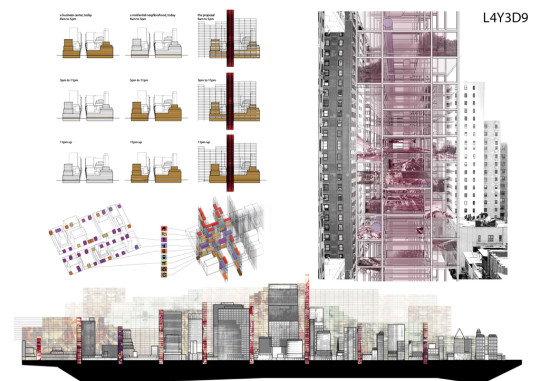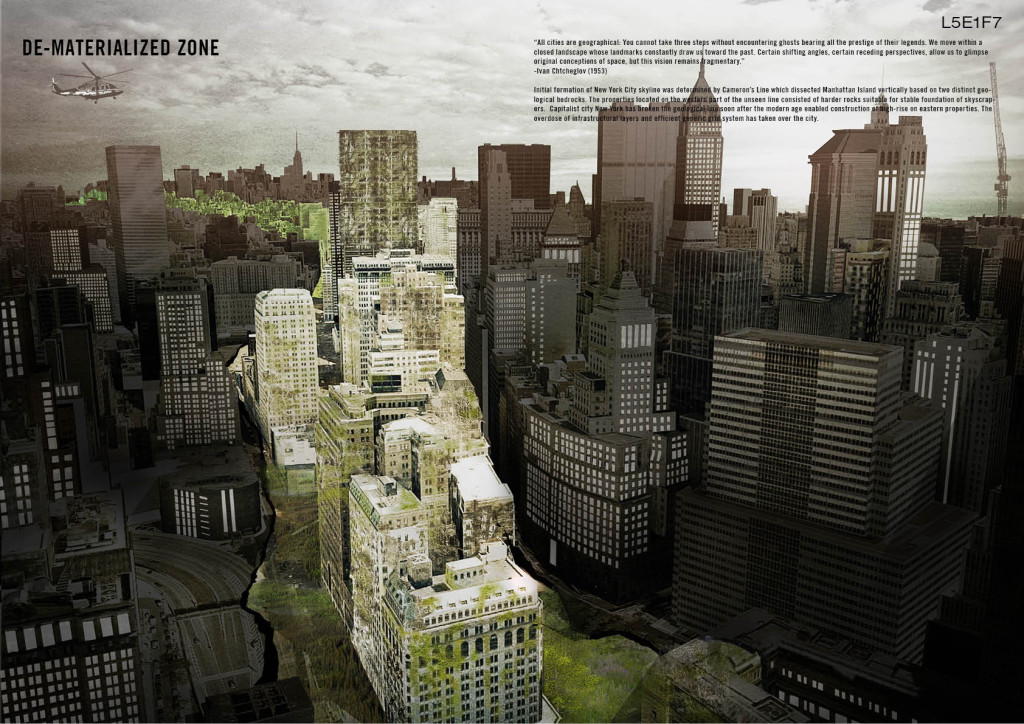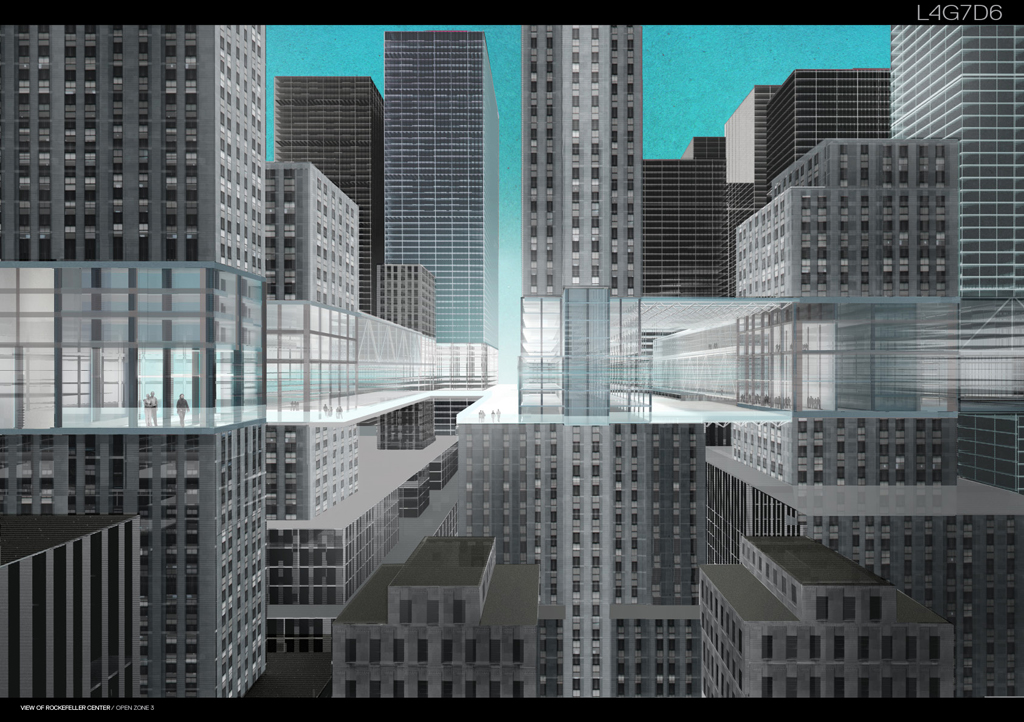Info:
Title: The sky is the limit - Code: L4Y3D9Contest: NY / 2012
By: D. Tanzj - G. Fruttaldo - L. Varkulja - B. Lenci - R. Kirilova
Views: 3106 Likes: 0
Votes:
JOSHUA PRINCE-RAMUS6 EVA FRANCH I GILABERT2 ROLAND SNOOKS1 SHOHEI SHIGEMATSU1 ALESSANDRO ORSINI4 MITCHELL JOACHIM02.3
The sky is the limit

 The sky is the limit. If present will become past, and if it is in the past where we will find “seeds” for the future, to think about future is to think about our cities right now. We oppose the anxiety of a future that is not here yet as well as a secure refuge in the past. Instead, we observe the present; we observe how our cities are shaped, how people relate and how the environment relates, co-relates or un-relates to them. We believe that it is through thinking and working in the present that the urban view of the future city will be born. The dense space of New York has incessantly fostered changes in the way its inhabitants dwell: nowadays the average size of the city apartments is smaller than in the rest of the country; simple activities like dining at home, grooming or doing laundry are outsourced. New Yorkers have created extensions of their home in the city. The streets of New York are lined with restaurants, cafés, laundries, nail salons. The connectivity assured by public transportation below ground and taxi service above ground have outdated private cars. The sharing of these facilities not only encourages the community experience, but if maximized in scale can prove to be energy efficient. Despite the inventiveness and resourcefulness of New York developers and city planners to maximize the use of the blocks defined by the grid of streets and avenues, there are still parts of the city that are activated only during daytime, because of the prevailing office programs of their buildings.
The sky is the limit. If present will become past, and if it is in the past where we will find “seeds” for the future, to think about future is to think about our cities right now. We oppose the anxiety of a future that is not here yet as well as a secure refuge in the past. Instead, we observe the present; we observe how our cities are shaped, how people relate and how the environment relates, co-relates or un-relates to them. We believe that it is through thinking and working in the present that the urban view of the future city will be born. The dense space of New York has incessantly fostered changes in the way its inhabitants dwell: nowadays the average size of the city apartments is smaller than in the rest of the country; simple activities like dining at home, grooming or doing laundry are outsourced. New Yorkers have created extensions of their home in the city. The streets of New York are lined with restaurants, cafés, laundries, nail salons. The connectivity assured by public transportation below ground and taxi service above ground have outdated private cars. The sharing of these facilities not only encourages the community experience, but if maximized in scale can prove to be energy efficient. Despite the inventiveness and resourcefulness of New York developers and city planners to maximize the use of the blocks defined by the grid of streets and avenues, there are still parts of the city that are activated only during daytime, because of the prevailing office programs of their buildings.
But, with the world’s urban population set to double by 2030, as estimated by the current urbanization rate, how will the fabric of New York respond? With so much of New Yorkers’ lives relying on services outside of their home space, how could the streets of the grid support the increase in density in a scenario where space will become exponentially more valuable?
Our project looks at the space in between buildings: here the streets exist no longer, but an overreaching framing system takes over and provides a multiplicity of layers and interconnections. In this super structure the city thrives: businesses, laundries, schools, grocery stores and restaurants as well as parks, transportation systems, and energy generators populate the framing system. The existing built space of the blocks is preserved or converted for residences. The street is multiplied in an array of levels, overlapping and interweaving. The glorification of the grid rises from the underground of the existing city to the space above the buildings providing unexpected place of encounters for our fellow New Yorkers.
Our project looks at the space in between buildings: here the streets exist no longer, but an overreaching framing system takes over and provides a multiplicity of layers and interconnections. In this super structure the city thrives: businesses, laundries, schools, grocery stores and restaurants as well as parks, transportation systems, and energy generators populate the framing system. The existing built space of the blocks is preserved or converted for residences. The street is multiplied in an array of levels, overlapping and interweaving. The glorification of the grid rises from the underground of the existing city to the space above the buildings.
A new and an unexpected place of encounters is then provided.






